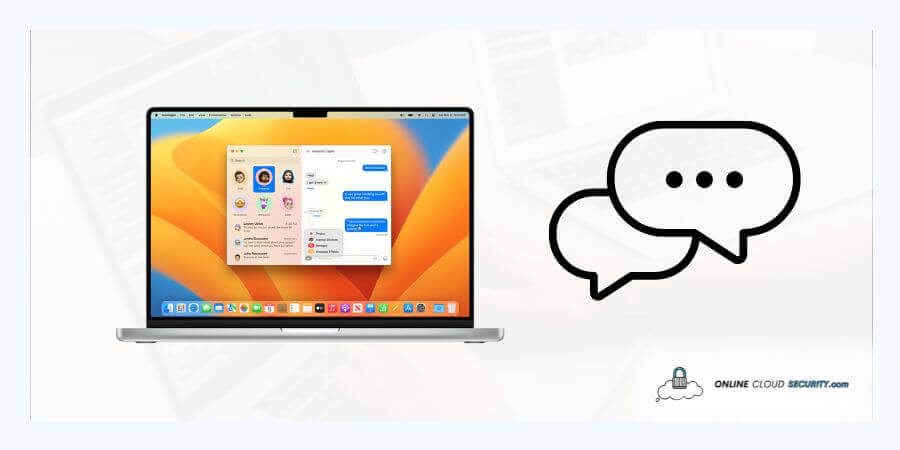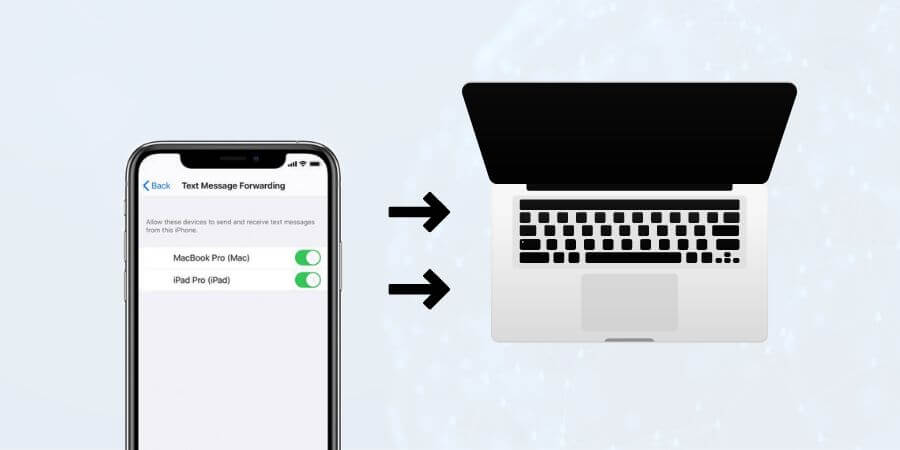
Dave Miller – Tech Enthusiast & Security Expert – January 28th, 2023

We are all familiar with SMS and use it often to communicate with others; However, MMS is unfamiliar to a generation, so people have been hunting for information on how to enable MMS on MacBook. Although both SMS and MMS technologies get made to allow for mobile phone communication, their methods of application vary. Before the advent of instant messaging programs, MMS became pretty popular, but configuring it on a Mac might be challenging.
Aside from the fundamental distinction between SMS and MMS messages, which can contain up to 160 characters, I’ll go into more depth about what you will use it for various purposes. Since these instant messaging apps have surpassed everything, we no longer regularly use MMS. Although these MMS are not as cost-free as our other apps, you must be familiar with the MMS concept. Since MacBook can also transmit these MMS, you only need to know how to turn it on in this case.
Learn more about how to enable MMS on your iPhone and Mac and what more you’ll need to do with it by reading on.
Your iPhone, iPad, or iPod touch may all get used to sending texts using the Messages app. The distinction is whether the communications get sent as SMS/MMS or iMessage. There is a distinction between them, which I will discuss at the post’s conclusion, but for now, let’s move on to using iPhone applications on a Mac.

The purpose of the Apple messaging app is to keep you in touch with the people and discussions most important to you. With iMessage, you may send an infinite number of texts, photographs, videos, documents, and other media types to any iOS, iPadOS, macOS, or watchOS device. You can also use it to send SMS and MMS messages. The feature we’re going to discuss today is utilizing the messaging app in iCloud to preserve your whole message history, including SMS and MMS, updated and accessible across all Apple devices, including your Mac. Many benefits come with frequent upgrades.
Note: Ensure you are logged in with the same Apple ID on each device for the messages to get synchronized across your devices. On devices where your Apple ID get not currently registered or when Messages for iCloud are off, your messages will not get kept up to date.
Thanks to text message forwarding, you may view the SMS/MMS messages you receive and send on the iPhone on your Mac or iPad. The chat can then continue using whatever device you want. You will need to allow the service to do this since consumers have reported on the official forum that after switching iPhones, their MacBook Pro now displays the “Cannot Send Message” problem. Therefore, the answer to the issue of whether you must enable it or not is unquestionable yes; therefore, next, I will discuss how to enable MMS on MacBook.
To first enable the MMS on MacBook, you will need to go through the settings of your iPhone.
Step#1: You can access Messages by going to Settings on your iPhone. You may configure the MMS for your MacBook here.
Step#2: Look for the Text Message Forwarding option for MMS on Mac and iPad. SMS/MMS messages you may send or receive on your iPhone can now get viewed on your Mac or iPad thanks to Text Message Forwarding. You may manually forward the text messages by tapping and pressing the message bubble you want to send. So by tapping More to choose additional texts if desired, and tapping Forward and Send.
You may activate it directly for your MacBook when you see the list of devices that will receive the forward messages.
Note: Go to Settings > Messages if you don’t see Text Message Forwarding. IMessage should be turned off and then back on. After selecting Use Your Apple ID for iMessage under Send & Receive, sign in using the same Apple ID as on your other devices.
Step#4: Once the iPhone’s settings are complete, switch to your MacBook to learn how to enable MMS.
Step#5: Open the Messages app and choose Messages > Preferences before clicking iMessage. Check the Apple ID that gets shown. After opening the app, log in using your Apple ID and password.
After selecting an option and activating messaging, you should be capable of sending and receiving messages on your Mac! New SMS/MMS texts can be sent and received on additional devices as long as your iPhone is active and connected to Wi-Fi or a cellular network. You will now experience the same interface on the iPhone when you use MMS on your MacBook.
As a result, iMessages display blue bubbles on your iPhone, while SMS and MMS messages appear green. When Text Message Forwarding gets configured, you can use any device that complies with the Continuity system requirements. It allows you to use your iPhone to send and receive SMS and MMS messages.
Note: Your iPhone should run iOS 8.1 or later to receive and send SMS and MMS messages. As I detailed in the next section, both your iPhone and Mac should get logged into Messages with the same Apple ID.
How would you react if someone informed you that you could no longer send messages? Exactly what you are thinking—text messages have been a part of our lives for a long time, and if you can’t send a fast note, you won’t have any other ways to get the word across. The early 19th-century electrical telegraph systems employed electrical signals to transmit text messages, demonstrating how dated text messaging technology is. While wireless telegraphy, which uses radio waves to convey text messages, was created in the 19th century.
The primary objective is still to transmit brief personal, family, social, and business communications in this modern era. When voice calls are neither possible nor desirable, text messaging get most frequently used as a voice call replacement between private mobile phone users. When an incomplete or delayed response is allowed, texting is always practical. Additionally, people often favor text messaging because recipients get not compelled to reply immediately.
We can fully explore SMS, MMS, and other instant messaging tools thanks to technology. Let’s jump right into the differences between these three to comprehend the difference.
The most basic form of communication through mobile data transfer is the Short Message Service or SMS, as it is more often known. On December 3, 1992, colleague Richard Jarvis’ Orbitel 901 phone received the first SMS message from Neil Papworth. The rest, as they say, is history.
Thanks to text forwarding, you may view the SMS/MMS messages you receive and send on the iPhone on your Mac or iPad. The key distinction is that an SMS message may only be 160 characters long and only comprises text. When sending a text message, it initially travels through a control channel to a nearby mobile tower before entering an SMS center. It then travels to the recipient’s phone from the tower nearest to them.
By now, you might have surmised that MMS offers more than text messages. Even though when they display on your phone’s screen, SMS and MMS messages may seem identical. These communication kinds do, however, each have certain characteristics. However, the internet connection required to enable MMS often gets attained over cellular data networks. MMS may be a sophisticated communication incorporating media items such as video, audio, images, and documents. You will be able to include the text and some other things. Moreover, after their introduction, MMS traffic in the US surged from 57 billion to 96 billion messages transmitted between 2010 and 2013, a 70% increase.
The way MMS operates is distinct because MMS messages must first be encoded for the recipient devices to view the incoming data. Here, the rule is that to receive and open MMS messages, the recipient device must support MMS. Recipients must use a standard internet browser to see material on devices that do not support MMS.
A form of online chat known as instant messaging enables real-time text transfer across the Internet or another computer network. While iMessage is Apple’s instant messaging service that transmits messages over the Internet, utilizing your data. It is only one example of how the instant messaging applications business has expanded over the years. They only function when there is an Internet connection. It would help if you had a data subscription to send iMessages, but you can also send them over Wi-Fi.
Whatsapp is the most well-known one we use. iMessage is an Apple-only platform, but Meta Platforms own WhatsApp. WhatsApp offers many more private and secure features than iMessage, including group conversations and end-to-end encryption compatible with both iPhones and Android devices.
Another well-known instant messaging software is Telegram. In 2022, Telegram will have 700 million monthly active users, according to business statistics. That is a 40% increase from the start of 2021. However, you’re right that it has been expanding swiftly. However, only a few nations and places are seeing its rapid rise. On a worldwide scale, few regular internet users have encountered it. Conversely, WhatsApp is widely used and well-liked everywhere in the world.
There are differences between how people can communicate via SMS and MMS. As MMS employs multimedia messages, it will cost you money and need more compatibility. MMS get still required for messaging between iPhones and Android devices. But in this case, instant messaging applications have altered how we communicate with one another. As a result, it will depend on your decision, and you must choose what will work for you.
Users may interact with companies using the Messages app thanks to Apple Messages for Business, a texting service. A device generates encryption and signature key sets to be utilized with the service when a user activates iMessage on the device. This way, communications between a user’s device and Apple’s iMessage servers are encrypted and sent to the firm. The Apple Messages for Business service never keeps any messages in an unencrypted state. For these services, check out the official website for additional information.
Creating a Messages for a Business account via Apple Business Register is the first step in using Messages for Business to connect with your clients. Remember to employ an asynchronous messaging system that leaves operators’ staff during regular business hours to qualify for a Messages for Business account. Operationally, you must demonstrate your ability to assist your corporate clients in preparing for the introduction of Messages for Business.
Although texting has altered how we interact, it is already obsolete. In this case, MMS and instant messaging applications are the way to go because so many people have already made the switch. You may send voice messages, receive read receipts, confirm delivery, and check to see if anyone is responding to your message in real-time using iMessage.
You would want to use it on every Apple device. Because you now know how to enable MMS on MacBook, you would also like to use it on your other Apple devices that get not covered here. Remember that iMessage is not turned on by default on an iPhone, but you can do so while configuring the device. Therefore, whatever you decide to do, follow the instructions above, and you’ll be ready to go. Additionally, if your Apple ID isn’t used for two-factor authentication on a device. In that case, a verification code will display on your other devices before you can set it up for the first time. Although iMessage gets only fully recognized on Apple devices, several programs allow users to transmit iMessages to other hardware that doesn’t use Apple’s software.
Google immediately provides RCS chat capabilities through its Android Messages app to everyone who uses it as its main messaging app to compete with this. This is made possible by Rich Communication Services (RCS), a feature that Android users eagerly anticipated.
**Onlinecloudsecurity.com is a participant in the Amazon Services LLC Associates Program, an affiliate advertising program designed to provide a way for websites to earn advertising revenues by advertising and linking to Amazon.com and affiliated sites. As an Amazon Associate we earn affiliate commissions from qualifying purchases.**

Dave Miller is an IT Consultant for Online Cloud Security and has over 7 years of experience in the Information Technology space. He also specializes in repairing laptops & computers. In his spare time, he loves to talk about new technologies and hosts monthly IT and Cyber Security meetings in the Houston area.
Click any button down below to share this article on the following channels:

Online Cloud Security is here to recommend you the most secure devices, from laptops to smartphones, we only want to provide you with products that we have tested and used ourselves for online security. Every product that we recommend is heavily inspected and tested for security against hackers, viruses, malware, and any other intruders that may want to steal your information.

Online Cloud Security is here to recommend you the most secure devices, from laptops to smartphones, we only want to provide you with products that we have tested and used ourselves for online security. Every product that we recommend is heavily inspected and tested for security against hackers, viruses, malware, and any other intruders that may want to steal your information.
Your Trusted Source for Online Security